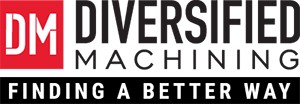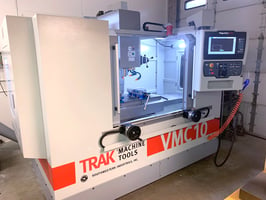Moving Forward Efficiently with a Legacy Bill of Material There are many catalysts that cause a...
Enhancing DFM Strategies: The Role of BOM in Machining
Understanding the Role of BOM in Machining with Contract Manufacturers
In today’s competitive manufacturing landscape, the collaboration between contract manufacturers and OEMs is crucial for successful product development. It’s important to understand the significance of the bill of material (BOM) in machining and its role in enhancing design for manufacturing (DFM) strategies.
The bill of material (BOM) plays a critical role in machining processes. It is a comprehensive list of all the components, subassemblies, and raw materials required to manufacture a product. For contract manufacturers, having an accurate and up-to-date BOM is essential for efficient production.
raw materials required to manufacture a product. For contract manufacturers, having an accurate and up-to-date BOM is essential for efficient production.
The BOM provides detailed information about the quantities and specifications of each part, allowing contract manufacturers to plan and optimize their machining operations. It helps them identify the necessary tools, equipment, and resources needed for the manufacturing process.
Furthermore, the BOM serves as a reference document for quality control and inspection. By cross-referencing the BOM with the finished product, contract manufacturers can ensure that all components are included and meet the required specifications. Overall, understanding the role of BOM in machining is crucial for contract manufacturers to streamline their production processes, improve efficiency, and maintain quality standards.
Optimizing NPI with Effective BOM Management
New product introduction (NPI) is a critical phase in product development, and effective BOM management plays a vital role in its success. Contract manufacturers need to collaborate closely with OEMs to ensure that the BOM accurately reflects the design intent and requirements of the new product.
By properly managing the BOM, contract manufacturers can optimize NPI processes in several ways. They can identify any potential issues or constraints early on, allowing for timely adjustments and modifications. This helps prevent costly delays and ensures a smoother transition from design to production.
Additionally, effective BOM management enables contract manufacturers to streamline the sourcing and procurement of components. By maintaining an updated BOM, they can identify the required materials and initiate the purchasing process in advance, reducing lead times and minimizing supply chain disruptions.
Optimizing NPI with effective BOM management enhances collaboration between contract manufacturers and OEMs, accelerates time-to-market, and improves overall product quality.
Implementing DFM Principles with BOM Integration
Design for manufacturing (DFM) principles focus on designing products that are optimized for efficient and cost-effective manufacturing processes. Integrating DFM principles with BOM management is a necessary measure for contract manufacturers to ensure smooth production and minimize manufacturing challenges.
By considering manufacturing constraints during the design phase and aligning the BOM with DFM principles, contract manufacturers can avoid potential issues, such as complex assembly processes, excessive material waste, or difficulties in sourcing specific components.
BOM integration with DFM principles allows contract manufacturers to identify opportunities for standardization and component consolidation. This can lead to cost savings through economies of scale and simplified production processes.
Recapping, implementing DFM principles with BOM integration enables contract manufacturers to:
- Optimize manufacturing processes
- Reduce costs
- Enhance overall product quality
Enhancing Collaboration between Contract Manufacturers and OEMs
Collaboration between contract manufacturers and OEMs is crucial for successful product development. The BOM plays a central role in enhancing this collaboration.
By maintaining a clear and accurate BOM, contract manufacturers can ensure that they have a complete understanding of the OEM’s design intent and requirements. This allows them to provide valuable feedback and suggestions during the design phase, leading to improved manufacturability and cost-effectiveness.
Additionally, effective communication and collaboration regarding the BOM enable contract manufacturers to address any design changes or modifications promptly. This minimizes the risk of production delays or quality issues and ensures that the final product meets the OEM’s expectations.
Enhancing collaboration between contract manufacturers and OEMs through effective BOM management leads to better product outcomes, increased customer satisfaction, and stronger partnerships.
Leveraging BOM for Cost Efficiency and Quality Control
The BOM is a powerful tool for contract manufacturers to achieve cost efficiency and maintain quality control in machining processes.
By accurately documenting the quantities and specifications of each component, contract manufacturers can optimize their material usage and minimize waste. This leads to cost savings and improved profitability.
Moreover, the BOM serves as a reference for quality control and inspection. Contract manufacturers can cross-reference the BOM with the finished product to ensure that all components are included and meet the required specifications. This helps maintain consistent product quality and reduces the risk of defects or customer complaints.
Leveraging the BOM for cost efficiency and quality control enhances the competitiveness of contract manufacturers and contributes to their long-term success.
Why Diversified Machining
Designing for manufacturability is crucial for achieving optimal results in precision machining. Collaboration, communication, integrity, and a thorough understanding of machining processes are key to successful DFM implementation or a new product introduction (NPI). Embrace the DFM mindset—we do at Diversified Machining—and you will unlock new possibilities in product development while maintaining cost-effectiveness and high-quality standards.
Good luck with your future design endeavors! We look forward to hearing from you; contact us when you are ready to start your next DFM project.



